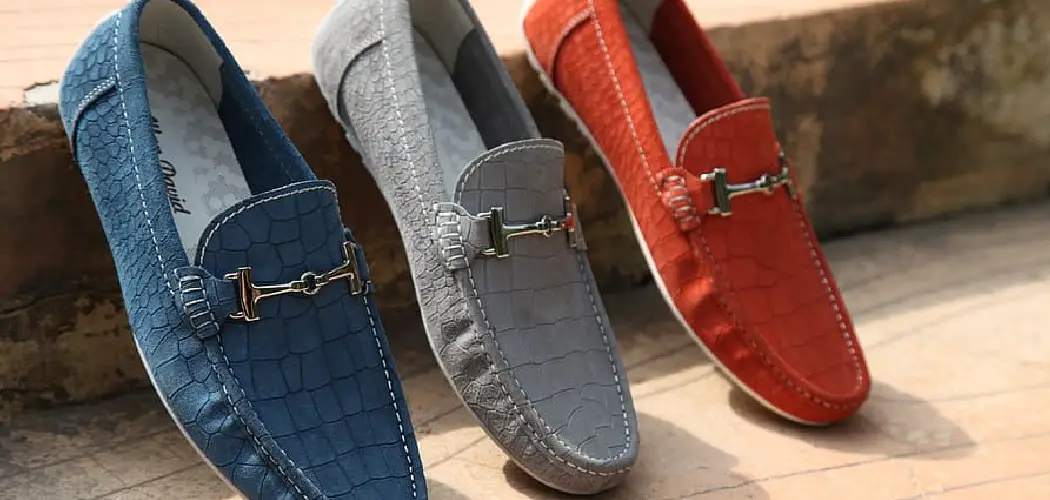Are you tired of wearing dirty loafers? If so, then this article is for you. Loafers are a popular type of shoe that can easily get dirty due to their low-cut design and lack of laces. However, with the right cleaning techniques, you can keep your loafers looking as good as new.
Cleaning your loafers keeps them looking sharp and prolongs their life, ensuring you get the most out of your investment. Whether you’re dealing with the wear and tear of daily use or preparing for a special occasion, knowing how to clean loafers is essential.
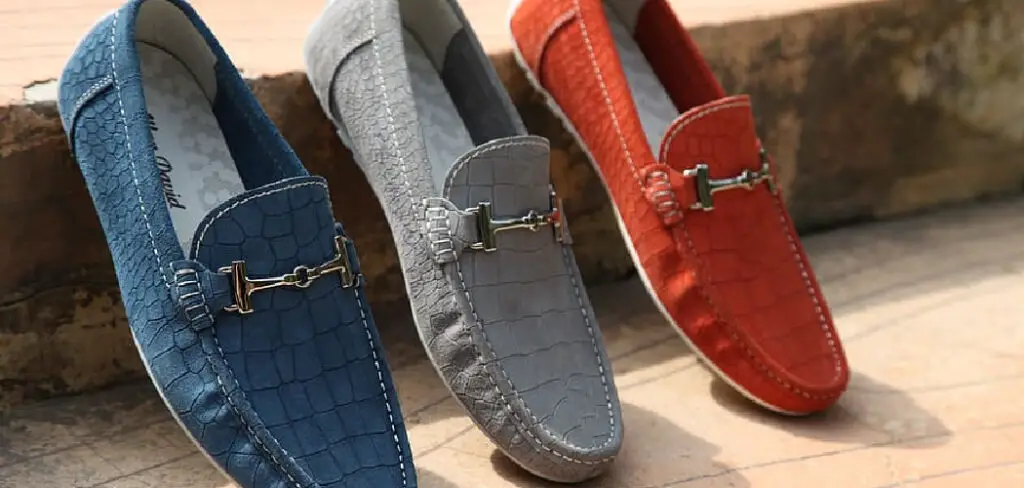
This guide will cover the necessary steps to maintain the elegance and integrity of your footwear, covering various materials from leather to suede. Let’s get started!
What are the Causes of Loafers Getting Dirty?
Before we jump into the cleaning process, it’s essential to understand the common causes of dirty loafers. This knowledge will help you prevent future stains and keep your shoes in top condition.
- Daily Wear: Loafers are often worn for everyday use, making them susceptible to dirt and grime accumulation from constant contact with the ground. This is especially true if you live in a city or walk on unpaved surfaces.
- Spills and Stains: Accidents happen, and when they do, they can leave behind unwanted stains on your beloved loafers. Whether it’s coffee, wine, or any other liquid spill, knowing how to clean them up quickly can save your shoes from permanent damage.
- Weather Conditions: Rain, snow, and mud can all damage your loafers, leaving behind unsightly marks. Knowing how to clean and protect your shoes from different weather conditions is crucial to maintaining their appearance.
Now that you know what causes loafers to get dirty, let’s dive into the cleaning process.
What Will You Need?
Here are the items you’ll need to clean your loafers effectively:
- Soft-bristled brush or old toothbrush
- Clean, soft cloth
- Leather cleaner (for leather loafers)
- Suede eraser and brush (for suede loafers)
- Mild detergent or soap
- Water
- Shoe polish (optional)
Make sure to gather all of these items before starting the cleaning process.
10 Easy Steps on How to Clean Loafers
Step 1. Remove Loose Dirt and Debris:
Start by gently brushing the surface of your loafers with a soft-bristled brush or old toothbrush. This will help to remove any loose dirt, dust, or debris that has accumulated on the shoes. Be gentle to avoid scratching the material, especially if you’re cleaning suede loafers.
Step 2. Make a Cleaning Solution:
Mix a small amount of mild detergent or soap with warm water to create a gentle yet effective cleaning solution for your loafers. Stir the mixture until it becomes soapy and consistent. For leather loafers, you might consider using a specialized leather cleaner to avoid damaging the material. For suede, however, steer clear of water-based solutions as they can cause stains. Always test the cleaning solution on a small, inconspicuous area of the shoe to ensure it doesn’t cause discoloration or damage.
Step 3. Apply the Cleaning Solution:
Apply the cleaning solution to your loafers using a clean, soft cloth. If you’re cleaning leather loafers, make sure the cloth is slightly damp with the solution and gently wipe over the surface of the shoes. For suede loafers, use the suede brush to gently apply the cleaning solution, taking care not to soak the material. Rub in a circular motion to lift away dirt and stains. Avoid using too much liquid on suede, as it can damage the texture and color of the material.
Step 4. Rinse and Repeat if Necessary:
Gently rinse the loafers with a clean, damp cloth to remove any soap residue. For leather loafers, ensure the cloth is only slightly wet to avoid saturating the leather. In the case of suede, use a dry cloth to blot any excess moisture instead of rinsing. If stains or dirt persist, repeat the cleaning process until your loafers are thoroughly clean. Be patient, as some stains may require a few attempts to be fully removed.
Step 5. Dry Your Loafers:
After cleaning, it’s crucial to properly dry your loafers to prevent any water damage or molding. Place leather loafers in a well-ventilated area away from direct heat or sunlight, as excessive heat can cause the leather to crack. For suede loafers, stuff them with paper towels to absorb moisture and help maintain their shape. Allow the loafers to air dry completely before wearing them again. Avoid using a hair dryer or any direct heat source, as this can damage the material of your shoes.
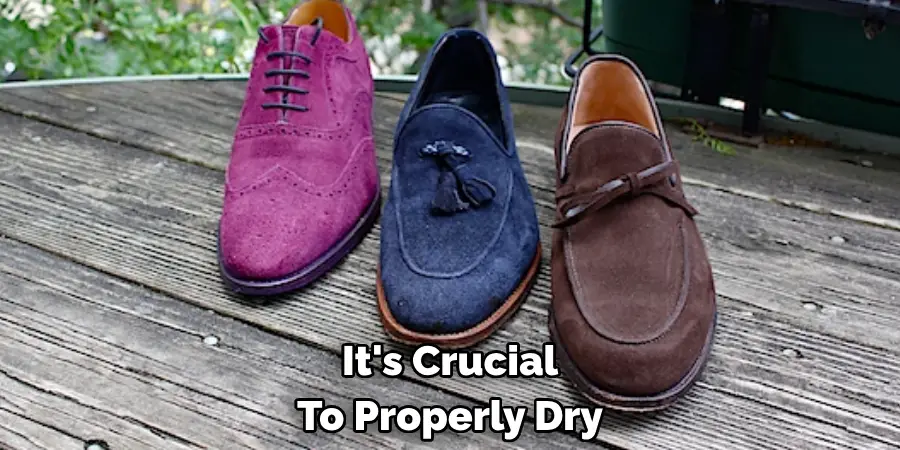
Step 6. Condition Your Leather Loafers:
Once your leather loafers have fully dried, applying a leather conditioner is a crucial step to keep them soft and prevent cracking. Use a clean, soft cloth to apply a small amount of conditioner evenly over the shoe’s surface. This will also help to restore the natural oils lost during the cleaning process. A suede conditioner can be used for suede loafers using the same method. Conditioning not only extends the life of your loafers but also maintains their luster and appeal.
Step 7. Polish Your Loafers (Optional):
Polishing is an excellent option for those who want to further enhance the appearance of their leather loafers. Choose a shoe polish that closely matches the color of your loafers and apply a small amount using a soft cloth or shoe brush. Rub the polish into the leather in circular motions, ensuring even coverage. Allow the polish to dry for a few minutes, then buff to a shine with a clean, soft cloth or brush. Note that this step is specifically for leather loafers and should not be attempted on suede, as it can damage the material.
Step 8. Protect Your Loafers:
Applying a protective spray or coating is recommended to prevent future stains and damage. For leather loafers, use a water-repellent spray suitable for leather materials. Suede loafers benefit greatly from a suede protector spray, which helps repel water and prevent stains. Hold the spray can approximately six inches away from the shoes and apply a light, even coat. Allow the protector to dry completely before wearing your loafers. This step not only extends the wearability of your loafers but also makes future cleaning efforts less strenuous.
Step 9. Store Your Loafers Properly:
Proper storage is key to maintaining your loafers’ shape and material integrity over time. Avoid throwing them in a pile with other shoes. Instead, place your loafers in a shoe rack or on a shelf where they can sit flat and retain their shape. For added protection, consider storing them in a cotton shoe bag or wrapping them in a soft cloth. This will protect them from dust and prevent any unwanted scratches or damage. If your loafers are a pair you wear less frequently, inserting shoe trees can help maintain their form and absorb any moisture, preventing odor and the formation of harmful molds.
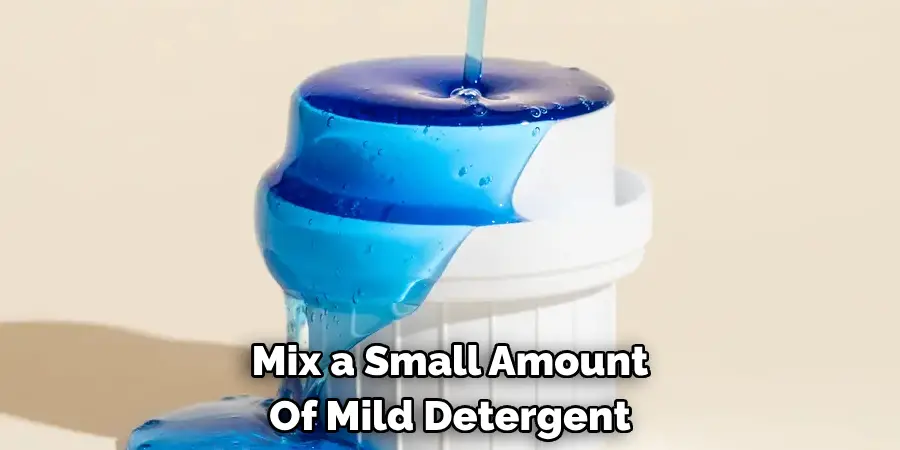
Step 10. Regular Inspection and Maintenance:
Regularly inspect your loafers for any signs of wear and tear. Pay close attention to the soles and heels for any signs of excessive wear that might need professional repair. Also, check the stitching and material for any damage.
Regular maintenance, such as conditioning and applying protective sprays, should be conducted every few months or as needed, based on how frequently the shoes are worn. This proactive approach keeps your loafers looking their best and extends their lifespan, ensuring they remain a timeless addition to your wardrobe.
By following these simple steps, you can keep your loafers clean, well-maintained, and ready to wear for any occasion.
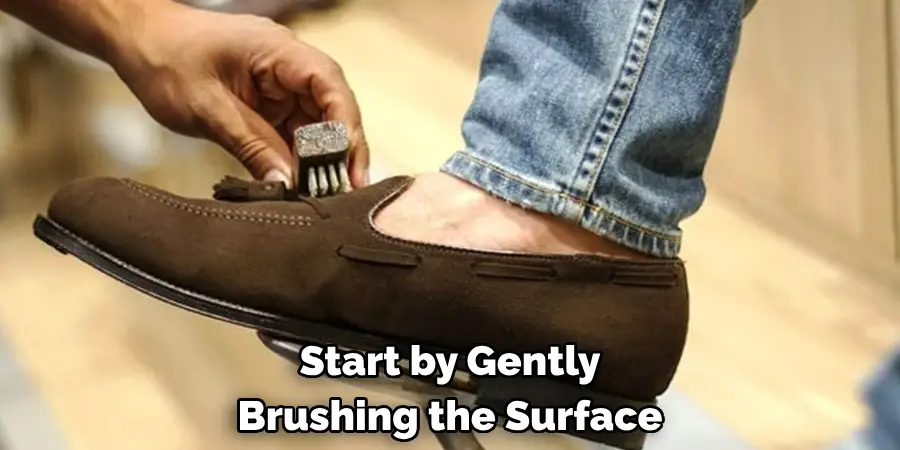
5 Additional Tips and Tricks
- Use a Soft Brush for Dry Dirt: Before applying any wet cleaning method, use a soft-bristled brush to gently remove any surface dirt and dust from your loafers. This helps prevent scratching or damaging the material, especially if they’re made of delicate leather or suede.
- Condition Leather Loafers: Apply a leather conditioner after cleaning and drying your leather loafers. This keeps the leather supple, prevents it from drying out and cracking, and extends the life of your shoes.
- Protect Suede with a Spray: For suede loafers, consider using a protective spray designed for suede materials. This will help repel water and prevent stains, keeping your loafers looking new for longer.
- Avoid Direct Heat: When drying your loafers, avoid placing them near direct heat sources such as radiators or using a hairdryer. Excessive heat can cause materials to warp or dry out, leading to damage. Instead, allow them to air dry naturally away from direct sunlight.
- Stuff with Newspaper to Maintain Shape: While your loafers are drying, stuff them with newspaper or a shoe tree. This helps absorb moisture from the inside and maintains the shape of the loafers, preventing them from becoming misshapen as they dry.
With these tips and tricks, you’ll be able to keep your loafers looking clean and in top condition.
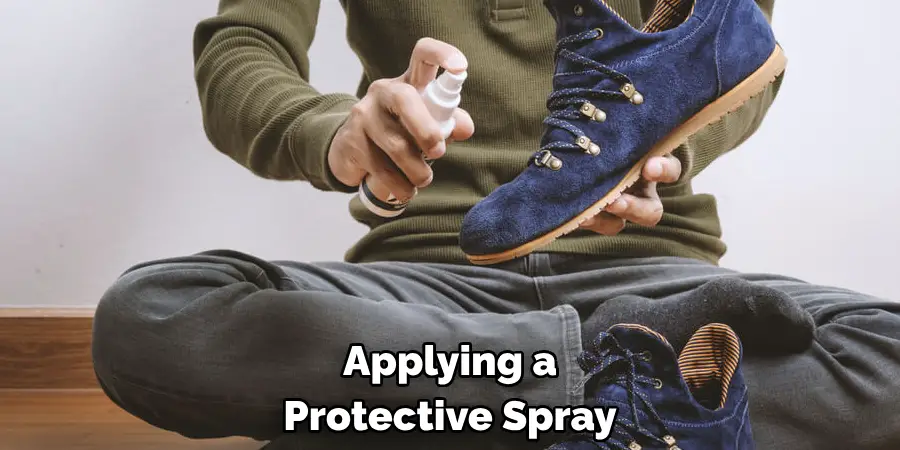
6 Things You Should Avoid:
- Do Not Use Harsh Chemicals: Avoid using cleaning agents that contain harsh chemicals, as they can strip the natural oils from leather, leading to dryness and cracking. For suede loafers, these chemicals can cause permanent discoloration.
- Steer Clear of Immerging in Water: Never immerse your loafers fully in water, especially if they are made of leather or suede. Full immersion can cause the material to warp, and the adhesives used to construct the shoe may weaken.
- Avoid Excessive Rubbing: Avoid rubbing the surface too harshly when removing stains or marks. Excessive friction can damage the material’s surface, especially on suede, which is more delicate and can easily become worn.
- Don’t Dry Using Direct Sunlight: While it may be tempting to speed up the drying process by placing loafers in direct sunlight, this can lead to fading and uneven discoloration, particularly for dyed leather.
- Skip Home Remedies Without Research: Home remedies and DIY cleaning solutions might only sometimes be suitable for all loafer materials. Before applying substances like vinegar or baking soda, research or consult a professional to ensure it won’t damage your shoes.
- Avoid Wearing Loafers in Rough Conditions: If possible, avoid wearing your loafers in harsh weather conditions like heavy rain or snow. These elements can damage the material and shorten the lifespan of your shoes.
By avoiding these common cleaning mistakes, you can maintain the quality and appearance of your loafers for years to come.
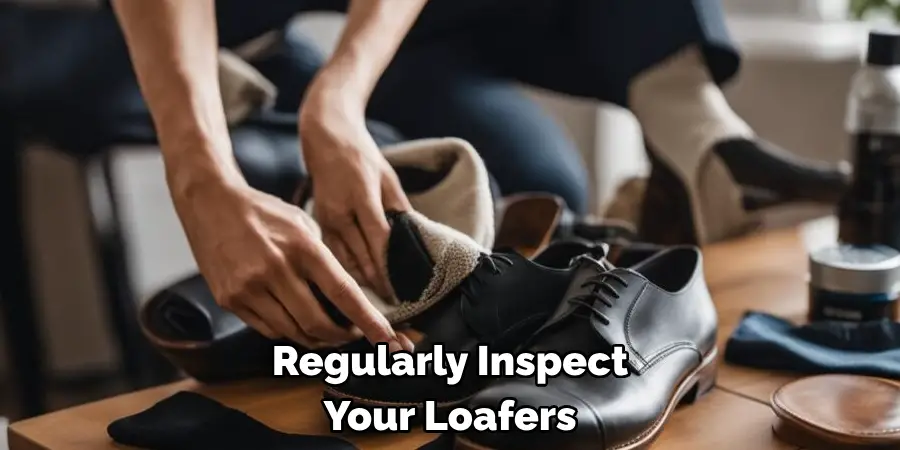
What Can Damage Your Loafers?
- Moisture and Humidity: Moisture and high humidity levels can cause leather to absorb water, leading to warping and cracking. It’s essential to keep your loafers dry when not in use.
- Heat Exposure: Just like with direct heat sources, exposure to high temperatures or sunlight can damage the material of your loafers, causing them to fade or warp.
- Neglecting Regular Cleaning and Maintenance: Neglecting to clean and condition your loafers regularly can cause dirt and stains to build up, leading to permanent damage over time.
- Incorrect Storage: Storing your loafers in a damp or humid environment can encourage mold growth while storing them in a hot or dry place can cause the material to dry out and crack.
- Wearing Loafers in Inclement Weather: While loafers are stylish and versatile, they may not be suitable for certain weather conditions. Constant exposure to rain, snow, or extreme heat can damage the material and affect its appearance.
By being aware of these potential hazards, you can take the necessary steps to protect your loafers and ensure they stay in excellent condition for as long as possible.
How Can You Waterproof Your Loafers?
- Using a Protective Spray: As mentioned earlier, using a protective spray designed for suede or leather can help repel water and prevent stains.
- Applying Beeswax or Vaseline: For leather loafers, you can also apply beeswax or Vaseline to create a waterproof barrier. Just be sure to test it on a small, inconspicuous area first to ensure it won’t damage the material.
- Using Waterproofing Solutions: You can also find specialized waterproofing solutions designed specifically for shoes. These typically come in the form of sprays or creams and provide long-lasting protection against water and stains.
- Wearing Overshoes: In particularly wet or snowy weather, consider wearing overshoes or galoshes over your loafers to protect them from the elements.
- Drying and Cleaning Properly After Exposure: If your loafers do get wet, be sure to remove any excess moisture with a towel and allow them to air dry naturally. Once fully dried, clean and condition them as usual to prevent any damage.
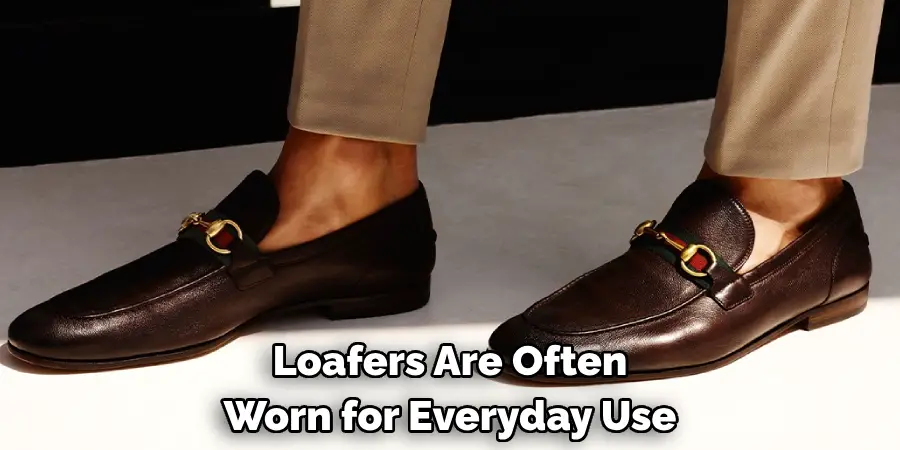
These methods can help keep your loafers waterproof and protect them from the elements, extending their lifespan and keeping them looking great. With regular care and maintenance, you can enjoy your favorite pair of loafers for many years to come.
How Can You Condition and Polish Your Loafers?
- Choose the Right Products: When it comes to conditioning and polishing your loafers, it’s essential to use products specifically designed for the material of your shoes. Using the wrong products can cause damage or not provide the desired results.
- Clean Before Conditioning: Before applying any conditioners or polishes, be sure to clean your loafers thoroughly to remove any dirt or debris. This allows the products to absorb better and prevents them from trapping dirt against the material.
- Apply in a Circular Motion: When applying conditioners or polishes, use a soft cloth and work in circular motions to evenly distribute the product over the surface of your loafers.
- Buff for Shine: After applying the product, use a clean cloth to buff your loafers in a back-and-forth motion. This helps bring out a natural shine and smooths out any uneven areas.
- Allow Time to Absorb: Finally, be sure to allow enough time for the conditioners or polishes to absorb into the material before wearing your loafers again. This ensures the best results and prevents any transfer of product onto your clothes.
By following these steps, you can keep your loafers looking polished and well-maintained, enhancing their overall appearance. Remember to regularly clean, condition, and polish your loafers to protect them from damage and extend their lifespan.
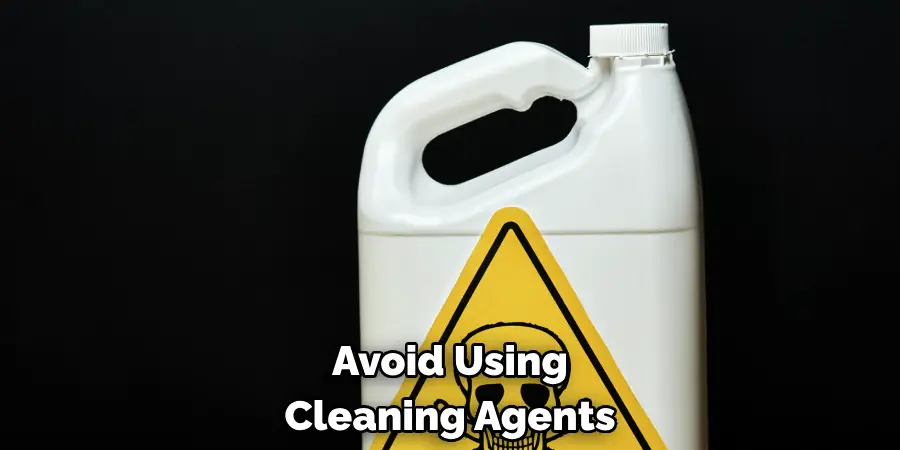
Conclusion
How to clean loafers is not just about maintaining their aesthetic appeal but also about protecting their material and extending their lifespan. By understanding the specific needs of the material, whether it’s leather, suede, or another fabric, and using the right products and techniques, you can ensure your loafers remain in top condition.
Regular maintenance, including cleaning, conditioning, and waterproofing, will keep your loafers looking great and feeling comfortable for years to come. Remember, a little care can go a long way, so don’t hesitate to invest some time into caring for your loafers. They aren’t just a part of your wardrobe; they’re an investment in your personal style and comfort.
Hopefully, this guide has provided valuable tips and insights on properly cleaning your loafers and avoiding common mistakes. By following these guidelines, you can keep your loafers looking sharp and stylish for any occasion. So go ahead and put your best foot forward in your favorite pair of loafers, knowing that they are well-maintained and protected from potential damage.

